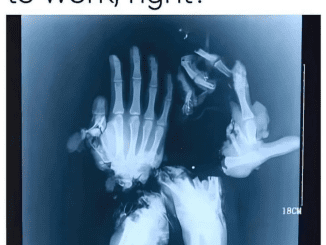Car dashboard warning lights can be a lifesaver, alerting drivers to potential issues with their vehicles. However, some of these symbols remain a complete mystery to many drivers. One of the most puzzling and often misunderstood icons is the one that looks like a boat floating on wavy lines. While some may joke that their car is switching to “yacht mode” or that pirates are on the horizon, the truth behind this symbol is far more practical and serious.
In this article, we’ll uncover what this “sailboat” light really means, how to respond when it appears, and why it’s crucial not to ignore it.
The Mysterious Sailboat Icon: What Does It Really Mean?

Many drivers are familiar with common warning lights like the low fuel indicator, tire pressure warning, or check engine light. However, when a symbol resembling a boat floating on wavy lines appears, confusion often follows. What could this mean? Is your car preparing for a nautical adventure?
Recently, a viral post on social media gained attention when a driver shared an image of their dashboard, asking for help identifying this mysterious light. The post, which quickly garnered millions of views, was flooded with humorous guesses:
- “It’s in sailing mode. Your car will turn into a boat when you get near water.”
- “You forgot to raise the mast! Are you currently floating?”
- “Your car is now in yacht mode… Better head to the beach!”
Although the internet had a field day with these playful responses, the truth is much more grounded.
It’s Not a Boat—It’s the Engine Coolant Warning Light!
Despite the jokes and viral posts, the “sailboat” icon is not referring to a yacht, but rather to a critical issue with your engine. The icon actually represents the engine coolant warning light, which is designed to alert you when your engine is overheating or when the coolant levels are dangerously low.
The icon usually depicts a thermometer over wavy lines, symbolizing that the engine is too hot and needs attention. Here’s what you need to know about the different colors of the warning light:
- Amber/Yellow: This signals that your coolant level is low, and you should check it soon to prevent overheating.
- Red: This is a more urgent warning that your coolant level is critically low, or the engine is already overheating. Immediate action is required to avoid serious engine damage.
Video : Warning Lights On Your Car’s Dashboard, What Do They Mean (Explanation)
Why Does the Engine Coolant Warning Light Appear?
There are several factors that could trigger the engine coolant warning light. Understanding these potential causes can help you take action before things get worse.
- Low Coolant Levels: The coolant in your vehicle helps regulate the engine’s temperature. If the level is too low, the engine may overheat. This is one of the most common causes of the warning light appearing.
- Coolant Leaks: A crack in the radiator or a loose hose may cause coolant to escape, resulting in insufficient coolant to keep the engine cool.
- Faulty Thermostat: If the thermostat becomes stuck, it can prevent the engine from receiving the cooling it needs, causing the engine to overheat.
- Radiator Blockages: Dirt, debris, or corrosion in the radiator can restrict the coolant flow, leading to heat buildup and potentially damaging the engine.
- Water Pump Failure: The water pump circulates the coolant throughout the engine. If it’s not functioning correctly, the coolant won’t be able to circulate properly, leading to overheating.
How to Respond When the Engine Coolant Warning Light Comes On
Seeing the engine coolant warning light on your dashboard can be alarming, but knowing how to respond can make a significant difference in preventing further damage to your vehicle.

- Pull Over and Turn Off the Engine: If the light is red or you notice the engine temperature rising rapidly, stop driving immediately. Find a safe place to pull over and turn off the engine to allow it to cool down.
- Check Coolant Levels: After allowing the engine to cool down, pop the hood and check the coolant reservoir. If it’s low, you may need to top it up with the correct type of coolant.
- Look for Leaks: If you notice coolant pooling beneath your vehicle, it could indicate a leak that requires professional repair.
- Call a Mechanic: If you’re unsure about what’s causing the problem or if the coolant levels seem fine but the warning light remains on, it’s best to contact a mechanic. They can diagnose the issue and perform any necessary repairs.
Why Ignoring the Coolant Warning Light Is Dangerous
Ignoring the engine coolant warning light can lead to severe engine damage. Overheating can cause critical engine components, such as the cylinder head, to warp or crack, leading to expensive repairs or even the need for an engine replacement.
In addition to the financial costs, an overheating engine can also cause your vehicle to break down unexpectedly, leaving you stranded on the side of the road. Taking immediate action when the coolant light comes on can prevent these unfortunate scenarios.
How Understanding Dashboard Lights Can Save You Money
Dashboard symbols may seem like a nuisance or an inconvenience, but they play a critical role in maintaining the health of your vehicle. By learning what the various symbols mean, you can catch potential problems early, saving you from costly repairs and breakdowns.
Video : What do these lights on the dashboard of a car mean?
The engine coolant warning light is just one example of a symbol that requires immediate attention. Understanding the meaning behind it, as well as how to react when it lights up, can help you keep your car running smoothly and avoid expensive damage.
Conclusion: Don’t Let Dashboard Lights Catch You Off Guard
Next time you see the “sailboat” light or any other dashboard warning light, remember: it’s not a clue that your car is about to take you on a cruise. Instead, it’s a vital alert that your engine needs attention.
Take the time to familiarize yourself with your car’s warning symbols, and never hesitate to take action when a critical light appears. Whether it’s pulling over, checking coolant levels, or calling a mechanic, responding quickly to these alerts can save you time, money, and the stress of dealing with avoidable car troubles.
So, next time that engine coolant warning light pops up, don’t just laugh it off—take it seriously and keep your vehicle in top shape!


